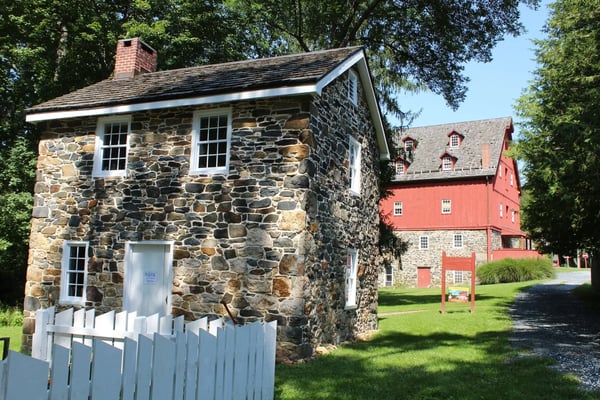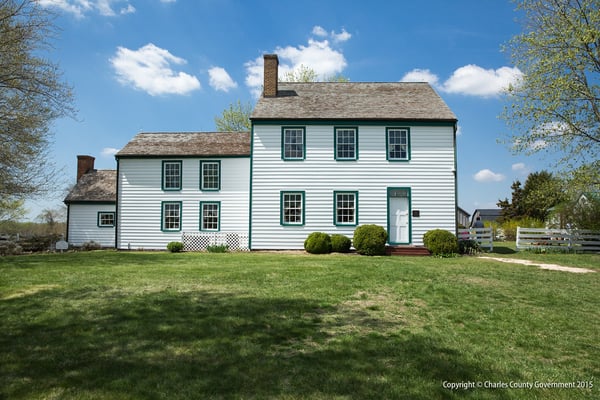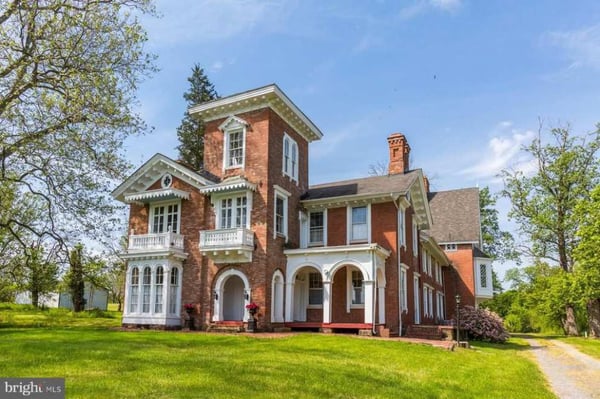
When you live in Maryland, history isn’t just something you visit — it’s something you live in. From 19th-century farmhouses and mid-century colonials to turn-of-the-century Victorians and brick row homes, the state is rich with architectural heritage. And preserving that history is not just a matter of pride — it’s also smart financial planning.
Maryland’s Historic Rehabilitation Tax Credit Program, managed by the Maryland Historical Trust (MHT), is one of the most powerful incentives available to homeowners who want to maintain or restore historic properties. It helps offset the cost of qualified renovations while ensuring that the character and craftsmanship of our communities are preserved for future generations.
At Design Builders, we work with homeowners across the region who are balancing modern comfort with historic integrity. This program is a perfect example of how Maryland supports that balance.
What Is the Historic Rehabilitation Tax Credit?
The Maryland Historic Revitalization Tax Credit Program provides a state income tax credit equal to 20% of eligible rehabilitation expenses for owner-occupied residences.
That means if you spend $50,000 on approved historic rehabilitation work, you could receive $10,000 back as a state income tax credit — and in some cases, as a refund if your tax liability is less than the credit amount.
It’s a practical way to reward homeowners for protecting Maryland’s architectural legacy, one renovation at a time.

Who Is Eligible?
To qualify, your home must be a certified historic structure. That typically means:
-
It’s individually listed on the National Register of Historic Places, or
-
It contributes to a National Register Historic District, or
-
It’s designated as a locally recognized historic property by your county or municipality.
If you’re unsure, the Maryland Historical Trust can confirm your property’s status before you apply.
You’ll also need to invest at least $5,000 in eligible rehabilitation work over a 24-month period. The credit is capped at $50,000, meaning the state will reimburse up to 20% of $250,000 in approved expenses.
What Kinds of Work Qualify?
The credit covers rehabilitation work that preserves and restores historic features, rather than modern remodels or additions.
Eligible expenses typically include:
-
Repair or restoration of woodwork, windows, and doors
-
Roof repair or replacement using historically appropriate materials
-
Masonry repointing or foundation stabilization
-
Restoration of original siding, shutters, or trim
-
Porch, balcony, and railing restoration
-
Electrical, plumbing, or HVAC upgrades — if integrated into the historic structure
-
Engineering, architectural, or consultant fees directly tied to the rehab project
Work that changes the original appearance, such as additions or complete replacements with modern materials, usually doesn’t qualify. Landscaping and aesthetic-only remodels are also excluded.
For Design Builders clients, this often means projects like restoring an original porch or veranda, rebuilding a historic deck using period-appropriate materials, or upgrading an outdoor kitchen or screened porch while keeping architectural consistency intact.

The Application Process: Plan Before You Build
Timing is everything.
To receive the credit, homeowners must apply and receive approval before starting work.
Here’s how it works:
-
Submit Part 1: Establish that your property is historic and eligible.
-
Submit Part 2: Provide detailed plans, drawings, and photos describing the proposed work. MHT reviews these plans to ensure they meet the Secretary of the Interior’s Standards for Rehabilitation.
-
Complete the project: Work must be completed within 24 months (extensions can be granted).
-
Submit Part 3: After completion, send in documentation — including receipts, photos, and proof of payment — to verify that the work met approved standards.
Once approved, you’ll receive a tax credit certificate from MHT to apply against your state income tax.
It’s worth noting that MHT typically processes complete applications within 30–45 days. Working with licensed, experienced contractors who understand the documentation process — and who can align modern methods with historic expectations — can make this step smoother.
Refundability and Carry-Forward Benefits
The homeowner credit is refundable, meaning if your tax credit exceeds your state tax liability, you can receive the difference as a refund. That’s a unique advantage over many other credit programs.
Additionally, if your project generates more credit than you can use in one tax year, you may carry it forward to future years. For larger projects, this can significantly reduce the long-term cost of preservation work.
Local Add-Ons: County and Municipal Programs
One of the best-kept secrets is that state and local historic tax credits can often be combined.
For example, Montgomery County offers its own 25% property tax credit for exterior-only rehabilitation work on homes within a designated Master Plan Historic District.
-
Minimum project cost: $1,000
-
Credit applies to county property taxes
-
Work must be done by a licensed contractor
-
Unused credit can be carried forward for up to five years
That means a homeowner could potentially earn a 20% state income tax credit and a 25% county property tax credit for the same qualified project — a substantial savings on a restoration that protects your home’s character.
Other Maryland counties, such as Anne Arundel, Frederick, and Baltimore City, have similar local programs. The specifics vary, but the goal is the same: encourage stewardship of historic properties through practical financial incentives.
Why These Credits Matter
Beyond the numbers, these programs represent something deeper — a recognition that the buildings around us are part of our shared story. Preserving a historic home isn’t about freezing it in time; it’s about ensuring that craftsmanship, quality, and heritage endure.
These incentives:
-
Encourage investment in older communities
-
Increase property values
-
Create jobs for skilled tradespeople
-
Strengthen neighborhood identity and curb appeal
And perhaps most importantly, they help homeowners balance preservation with progress. When done thoughtfully, modern improvements — like a new outdoor living space or structural reinforcement using helical piers — can fit seamlessly into the character of historic homes.
How Design Builders Can Help
Historic renovations require experience and respect — not just for the materials, but for the history behind them.
Design Builders has worked with homeowners throughout Maryland and Northern Virginia who want to preserve the beauty of older homes while adding the comfort and function of modern living. From restoring porches and decks to re-imagining outdoor kitchens, our team understands how to align quality craftsmanship with historic standards.
We’re happy to help homeowners explore whether their properties may qualify for the Maryland Historic Rehabilitation Tax Credit — and guide them in planning projects that meet MHT’s requirements.
If you’re considering work on your historic home, start a conversation with our team. Together, we can design a project that honors your home’s past while building for its future.
Ready to Preserve History — and Save Money?
The Maryland Historic Rehabilitation Tax Credit is one of the state’s best opportunities to protect your property’s legacy while making a wise financial investment.
If you’re ready to explore how your project could qualify, reach out to Design Builders today.
We’ll help you make the most of Maryland’s historic preservation programs — with craftsmanship that stands the test of time.
📞 Call us: (301) 875-2781
📧 Email: info@designbuildersmd.com
🌐 Visit: designbuildersmd.com

